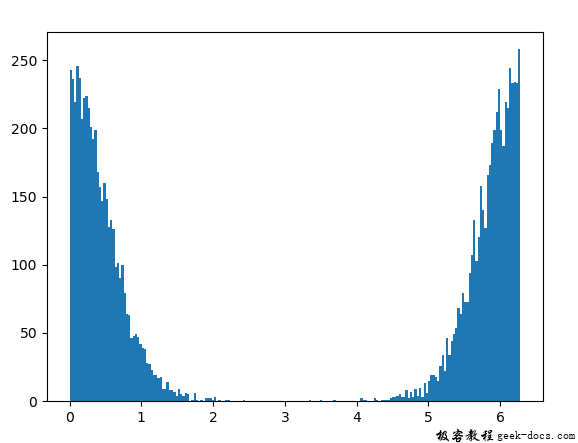Python random.vonmisesvariate()
Python random.vonmisesvariate()
The random module is used to generate random numbers in Python. These numbers are not actually random, but rather pseudo-random. This means that these randomly generated numbers can be determined.
random.vonmisesvariate()
vonmisesvariate() is a built-in method of the random module. It returns a random floating-point number with a von Mises or cyclic normal distribution.
Syntax: random.vonmisesvariate(mu, kappa)
Parameters:
mu: Mean angle, expressed in radians, between 0 and 2
pikappa: Concentration parameter, greater than or equal to zero
Returns: A random von Mises distributed floating-point number
Example 1:
# import the random module
import random
# determining the values of the parameters
mu = 0
kappa = 4
# using the vonmisesvariate() method
print(random.vonmisesvariate(mu, kappa))
Output:
0.9429600175580171
Example 2: We can generate numbers multiple times and plot a graph to observe the von Mises distribution.
# import the required libraries
import random
import matplotlib.pyplot as plt
# store the random numbers in a
# list
nums = []
mu = 0
kappa = 4
for i in range(100):
Temp = random.vonmisesvariate(mu, kappa)
nums.append(temp)
# plotting a graph
plt.plot(nums)
plt.show()
Output:

Example 3: We can create a histogram to visualize the density of the von Mises distribution.
# import the required libraries
import random
import matplotlib.pyplot as plt
# store the random numbers in a list
nums = []
mu = 0
kappa = 4
for i in range(10000):
Temp = random.vonmisesvariate(mu, kappa)
nums.append(temp)
# plotting a graph
plt.hist(nums, bins = 200)
plt.show()
Output:
